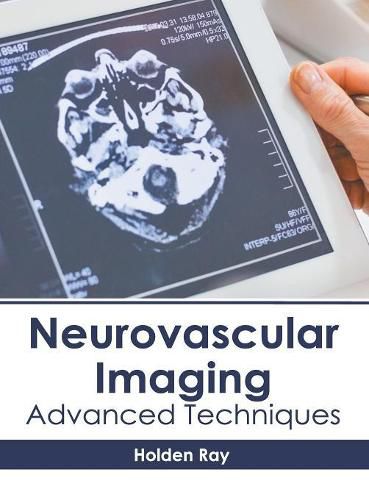Readings Newsletter
Become a Readings Member to make your shopping experience even easier.
Sign in or sign up for free!
You’re not far away from qualifying for FREE standard shipping within Australia
You’ve qualified for FREE standard shipping within Australia
The cart is loading…






This title is printed to order. This book may have been self-published. If so, we cannot guarantee the quality of the content. In the main most books will have gone through the editing process however some may not. We therefore suggest that you be aware of this before ordering this book. If in doubt check either the author or publisher’s details as we are unable to accept any returns unless they are faulty. Please contact us if you have any questions.
The advances in optical and MRI based imaging technology have expanded the frontiers of neuroscience and neurovascular research. Some common neurovascular imaging techniques include computed tomography (CT) scan, magnetic resonance imaging (MRI), magnetoencephalography (MEG), positron emission tomography (PET), and cerebral angiography. In a computed tomography (CT) scan, there is a use of computer-processed combinations of X-ray measurements taken from different angles to produce cross-sectional images of a specific body organ or the scanned object. In a magnetic resonance imaging, there is a use of nuclear magnetic resonance to form pictures of the anatomy and the physiological processes of the body. A CT scan of the head is useful in the detection of tumors, calcifications, infarction bone trauma, and haemorrhage, whereas, an MRI of the head is useful in diagnosing nuerological cancers, cerebrovascular disease, epilepsy, Alzheimer's disease, demyelinating diseases, etc. This book studies, analyzes and upholds the pillars of neurovascular imaging and its utmost significance in modern times. It includes some of the vital pieces of work being conducted across the world, on various topics related to the advanced techniques of neurovascular imaging. This book will serve as a reference to a broad spectrum of readers.
$9.00 standard shipping within Australia
FREE standard shipping within Australia for orders over $100.00
Express & International shipping calculated at checkout
This title is printed to order. This book may have been self-published. If so, we cannot guarantee the quality of the content. In the main most books will have gone through the editing process however some may not. We therefore suggest that you be aware of this before ordering this book. If in doubt check either the author or publisher’s details as we are unable to accept any returns unless they are faulty. Please contact us if you have any questions.
The advances in optical and MRI based imaging technology have expanded the frontiers of neuroscience and neurovascular research. Some common neurovascular imaging techniques include computed tomography (CT) scan, magnetic resonance imaging (MRI), magnetoencephalography (MEG), positron emission tomography (PET), and cerebral angiography. In a computed tomography (CT) scan, there is a use of computer-processed combinations of X-ray measurements taken from different angles to produce cross-sectional images of a specific body organ or the scanned object. In a magnetic resonance imaging, there is a use of nuclear magnetic resonance to form pictures of the anatomy and the physiological processes of the body. A CT scan of the head is useful in the detection of tumors, calcifications, infarction bone trauma, and haemorrhage, whereas, an MRI of the head is useful in diagnosing nuerological cancers, cerebrovascular disease, epilepsy, Alzheimer's disease, demyelinating diseases, etc. This book studies, analyzes and upholds the pillars of neurovascular imaging and its utmost significance in modern times. It includes some of the vital pieces of work being conducted across the world, on various topics related to the advanced techniques of neurovascular imaging. This book will serve as a reference to a broad spectrum of readers.